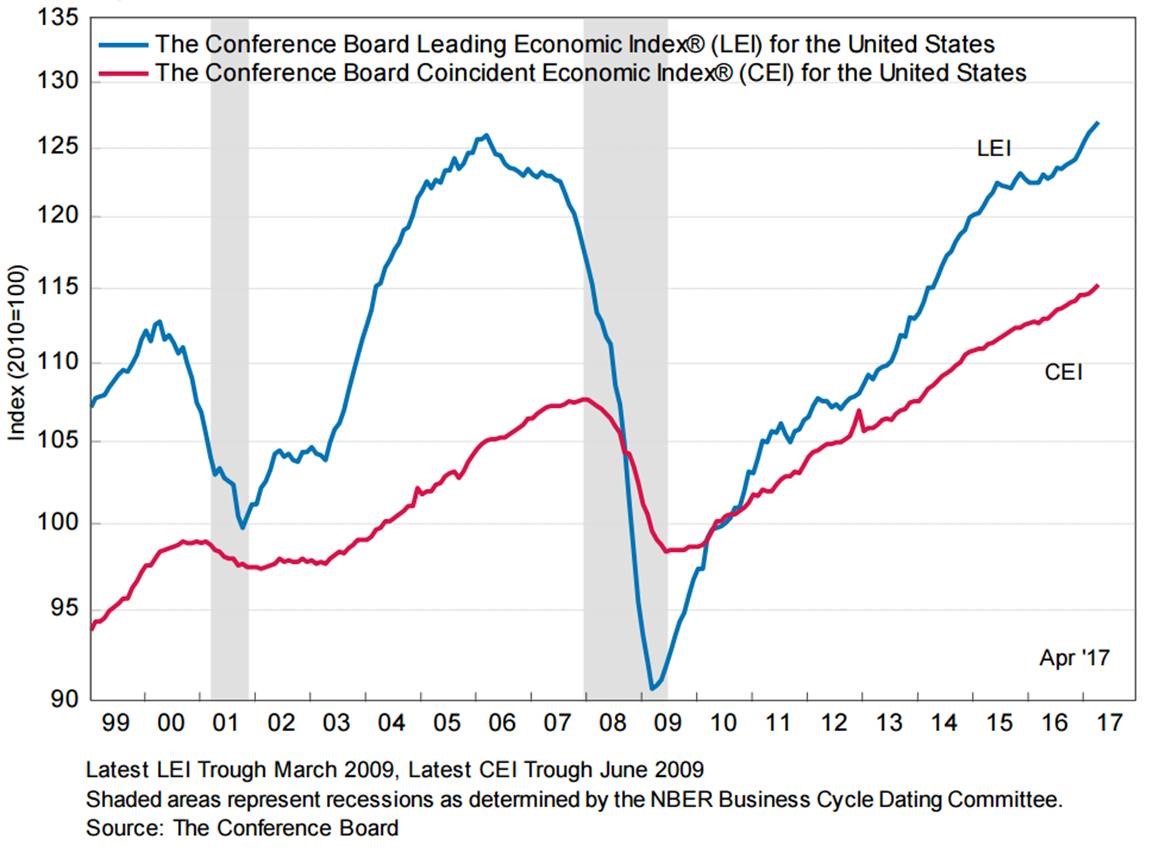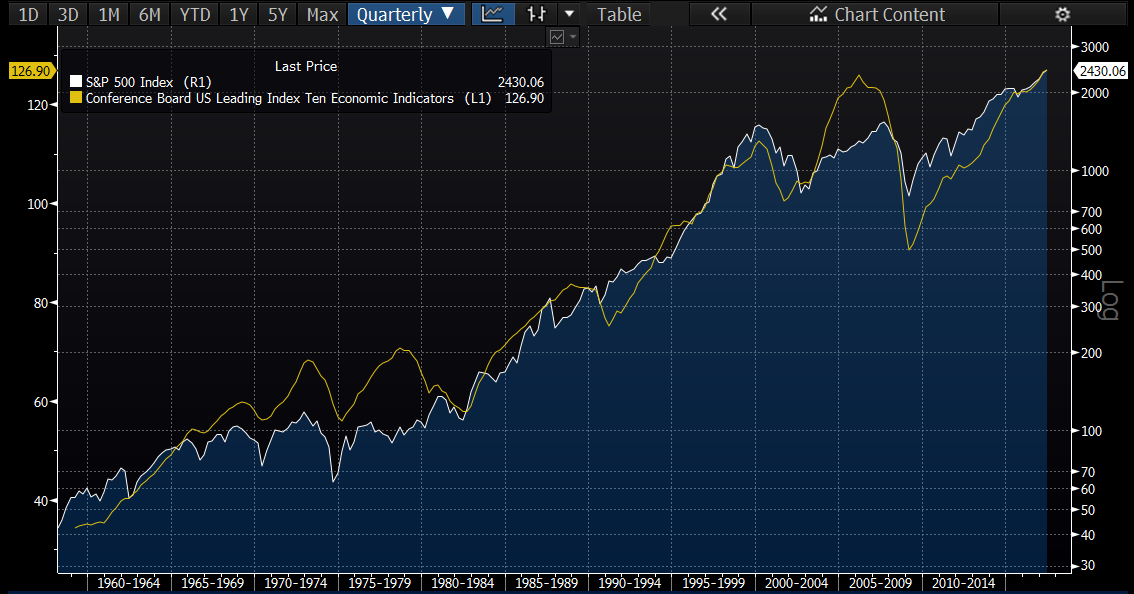Show me the way – US leading indicators and the sharemarket

Mason Stevens
With US leading economic indicators still rising, a sustained fall in economic activity and the share market is not currently being signalled.
The Conference Board Leading Economic Index (LEI) for the US increased 0.3% in April to 126.9 (2010 = 100), following a 0.3% increase in March and a 0.5% increase in February (see first chart). The LEI is a composite of ten variables that lead the business cycle by 6 to 12 months. The business cycle is represented in the chart by the Conference Board’s own Coincident Economic Index (CEI), a composite of high-frequency economic data that are coincident with GDP. The shaded areas in the chart show the official US recession periods. During recessions the CEI is falling, having been foreshadowed by earlier falls in the LEI.
The LEI has historically turned downward before a recession and upward before an expansion. Three consecutive monthly declines in the LEI is normally considered a bad sign for the share market and future economic growth. The LEI has generally proved capable of predicting recessions over the past 50 years.
The ten components of the US LEI are: 1) Average weekly hours for the manufacturing sector; 2) Average weekly initial claims for unemployment insurance; 3) Manufacturers’ new orders for consumer goods and materials; 4) ISM Index of New Orders; 5) Manufacturers’ new orders for non-defense capital goods excluding aircraft; 6) Building permits for new private housing units; 7) S&P 500 index; 8) Leading Credit Index; 9) Interest rate spread, defined as 10-year Treasury bond yield less Federal Funds rate; and 10) Average consumer expectations for business conditions.
Commenting on the latest LEI result, the Conference Board’s Director of Business Cycles & Growth Research said, “The recent trend in the US LEI, led by the positive outlook of consumers and financial markets, continues to point to a growing economy, perhaps even a cyclical pick-up. The first quarter’s weak GDP growth is likely a temporary hiccup as the economy returns to its long-term trend of about 2%. While the majority of leading indicators have been contributing positively in recent months, housing permits followed by average work week in manufacturing have been the sources of weakness among the US LEI components.”

The relationship between the LEI and the US share market can be seen in the chart below. Both are supposed to be forward-looking, anticipating changes in the economy before they occur, therefore they are fairly coincident with each other. A falling LEI will generally confirm a bear market rather than lead it. Likewise, a positive turn in the LEI will confirm when it is safe to buy back into the market.
No indicator is perfectly reliable. Very rarely the LEI has predicted a recession that did not occur. The share market (which is one of the components of the LEI) has done so more often, but the false signals tend to be short-lived. An old Wall Street saying attributed to the economist Paul Samuelson is, “The stock market has forecast nine of the last five recessions.” The important thing is to recognize the real deal when you see it as early as possible.
Where are we now? Continued rises in the composite LEI, the lack of an inverted yield curve (another component of the LEI), a 3.4% US equity risk premium, and earnings upgrades through the US Q1 profit reporting season, are all reasons to think that an end-of-cycle equity market downturn is not imminent. Short-term pullbacks in the market will still occur from time to time, but the strategy of “buying the dips” will most likely continue to apply until the classic warning signals turn red.

5 topics

Responsible for identifying domestic and international equity investment opportunities. 25 years of financial markets experience as an equity strategist, economist, analyst, portfolio manager and consultant.
Expertise

Responsible for identifying domestic and international equity investment opportunities. 25 years of financial markets experience as an equity strategist, economist, analyst, portfolio manager and consultant.
